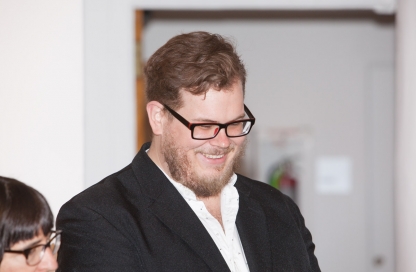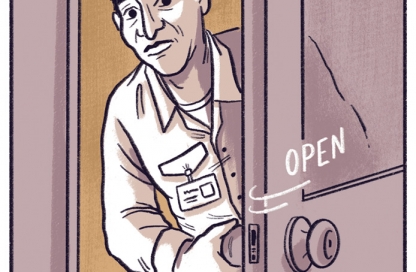Diego Vainesman’s trip to Cuba is an inspiration
One of our favorite people in the world, Diego Vainesman, had a chance to go to Cuba to teach a course in design. How did the opportunity come up? What was it like to be welcomed into a country with such a rich, complex heritage? Read on!
How did the opportunity to travel to Cuba come up?
For the past couple of years I’ve been invited to give workshops and lectures in Europe and South America. At the beginning of last year when President Obama came up with a list of 12 categories to visit Cuba I thought it would be a great idea to teach over there. I’ve always been very curious about the Cuban culture and wanted to experience it.
I did a lot of research, I started asking designers if they knew somebody in Cuba. I finally got in touch with some designers who connected me with the only design school in La Habana; ISDI (Instituto Superior de Diseño). Once in touch with the school’s authorities, I spent almost a year with back and forth emails trying to get all the paperwork done. After the Ministry of Labor approved me, the papers were submitted to the Ministry of Foreign Affairs, and upon their approval I got the official invitation from ISDI>
What were your first impressions of the country?>
You always notice that you are in a different country when you have to walk from the plane to the gates. Arriving to the José Martí airport was no different. Everybody was excited, from the tourist groups traveling for the first time to the people going back to see their relatives. Once outside the airport I had a 9 mile drive to La Habana. During that time I marveled at the beautiful and numerous vintage cars. I also noticed the lack of billboards and/or commercial advertising everywhere, except for the governmental ones.
As soon as I arrived I decided to take a walk around the neighborhood (Vedado), the architecture offered me a menu for all tastes, Art Deco, Art Nouveau, Colonial, Baroque, etc. And then I extended my walk to the Malecón, an esplanade which stretches for 5 miles with colorful buildings and people enjoying the horizon line>
Sounds ideal! What were you approved to teach, specifically? And what was the first day of classes like?
It was a 3 days workshop for 20-30 students but after going back and forth with all of the logistics I got an email letting me know that they would include 50 students plus 10 teachers. Thus, I decided to divide the 60 people into two groups and my 3 days became 6 days for two workshops.
Like most of the universities, teaching how to design logos could take between 4-8 weeks. The authorities of the university were very happy when I told them that I would be teaching how to design logotipes/isotypes in three days. Not to replace their way of teaching it, but to learn it in a very fast way that could be applied when they become professionals and are being asked to design within a couple of days
The first day was great, after giving a logo’s presentation six of the students put their work on the wall. I was very specific about the first round of logos to be hand drawn, nothing digital. Then tandems of five groups of six students presented their work. The students had a great attitude regardless of my workshop being longer than their usual school hours. During my first day I discovered very talented creative students with great humor and ready to learn.
The biggest surprise of the day was to have the filming of Fast and Furious #8 right in front of my classroom!
What is your sense of where design is going in Cuba? Will it be a wall of billboards or do you think there will be resistance to that among the people, even as new markets begin to open up?
It is hard to predict where design is heading. Most of the students coming out of school have to pay back the government with their time for their free education. Thus they have to spend the next two or three years working for a company that is assigned to them. Many of these places aren’t necessarily design oriented. I’m assuming that a lot of talent gets lost this way. Other students, at some point, start their own studios. I have to admit that coinciding with my time in Havana, it was the poster Biennial, and from the school I would go to the different galleries to be mesmerized by the quality of their work.
The real question is would Cuba accept capitalism? The billboards, branding, brochures, etc, etc. will be a result of that decision. The first American hotels are coming to Cuba, the first commercial flights are coming to Cuba, how much longer until one of these corporations starts buying billboards, or paying big advertising money? Cuban people have gone through some great and very rough times. Perhaps the major achievement will be if they reach a point where they have to discuss whether or not to have that wall of billboards.
What is your sense of people’s take on capitalism. Is it excitement? Fear? A mixture? My sense is there’s something to gain but so much to lose too. (that may be my own simplistic American political leanings though!)
I think that the full understanding of capitalism could be like a foreign thought for the majority. They had the revolution in 1959 and except for the people 65 and older I don’t think the younger people could get a full grasp of the whole concept. They could only get the notion through the movies, books, news, but this younger generation has never experienced it
It is difficult to understand. They have great free health care for everybody, free schools and universities, people go to see the Opera Carmen with many families attending. (I don’t think I could even afford it in New York with my family) On the other hand I don’t know how people could afford many other things with their low salaries. I admit that I’m not familiar with their social programs.
Something that I found out was that people are free to travel. But when they go to the different embassies their visas are being denied. The latest refugees laws make it even harder for most of the Cubans to travel. That is really sad.
If you have a chance to go back, what would you do with a second visit?
This is a very interesting question. The students, authorities, teachers who took the workshop and myself were very happy with the workshop. They specifically asked me to teach it again next year. I wouldn’t mind doing that again, I’ve been teaching it for the past three years and it always challenges the “new” students. It is new for them. On the other hand, I would love to go back with 15 American students mix them up with the Cuban students and create a class for the two cultures.
That sounds like an excellent idea! Thank you for sharing your thoughts and pics with us, Diego. Please let us know if you’re headed back to Cuba!


